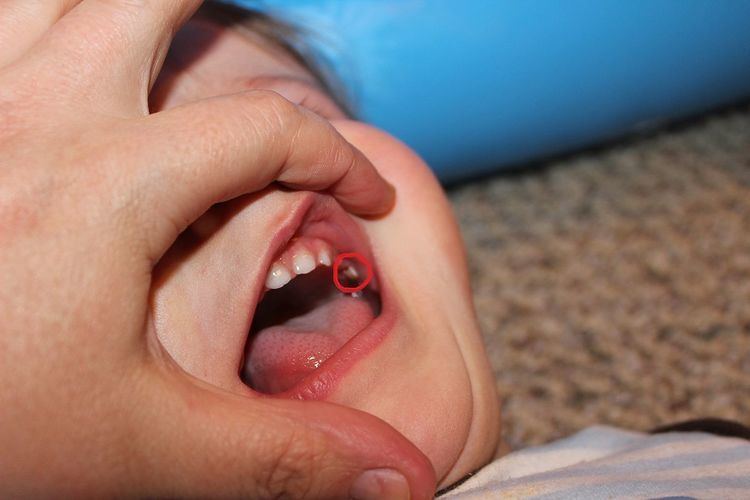 | ||
Bohn's nodules, otherwise termed Gingival Cysts of the Newborn, are smooth whitish bumps or cysts which are sometimes found in the mouths of newborns. They are found at the junction of the hard and soft palate, and along lingual and buccal parts of the dental ridges, away from the midline. These nodules are 1-3 mm in size, and filled with keratin.
The nodes are a result of cystic degeneration of epithelial rests of the dental lamina (rests of Serres). They are benign, and usually disappear within the first three months of life. Bohn's nodules are similar in appearance to Epstein's pearls, which develop on the roof of the mouth.
Bohn's nodules are named after German pediatrician Heinrich Bohn (1832-1888), author of Die Mundkrankheiten der Kinder (Mouth Diseases of Children).
